The Atlanta-based artist Gerald Lovell began painting at the age of 22 after discovering that a formal arts degree in graphic design wasn’t for him. Several years later, after some encouragement from friends in the city’s budding arts scene and a little help from YouTube, Lovell recently opened his first solo show in New York City.
On view at PPOW through February 20, “all that I have” features a series of portraits in larger-than-life scale, many of which the artist created after the onset of the pandemic. Inspired by his own interest in photography and his grandmother’s documentation of their family through photo albums, Lovell depicts his friends posed comfortably in everyday settings—perched on a chair or leaned against a tree—in captivating detail that immediately draws the viewer to their skin, which he has covered in a heavy-handed, textured impasto.
Accompanied by an essay from the writer and curator Antwaun Sargent, “all that I have” includes works like the embracing trio A Night on the Roof; the pensive Quil; a lounging couple titled Park Date; and even a five-feet-tall self-portrait. To learn more about the show, Lovell’s practice, and how he came to use the eye-catching impasto so deliberately, Whitewall caught up with the artist over the phone.
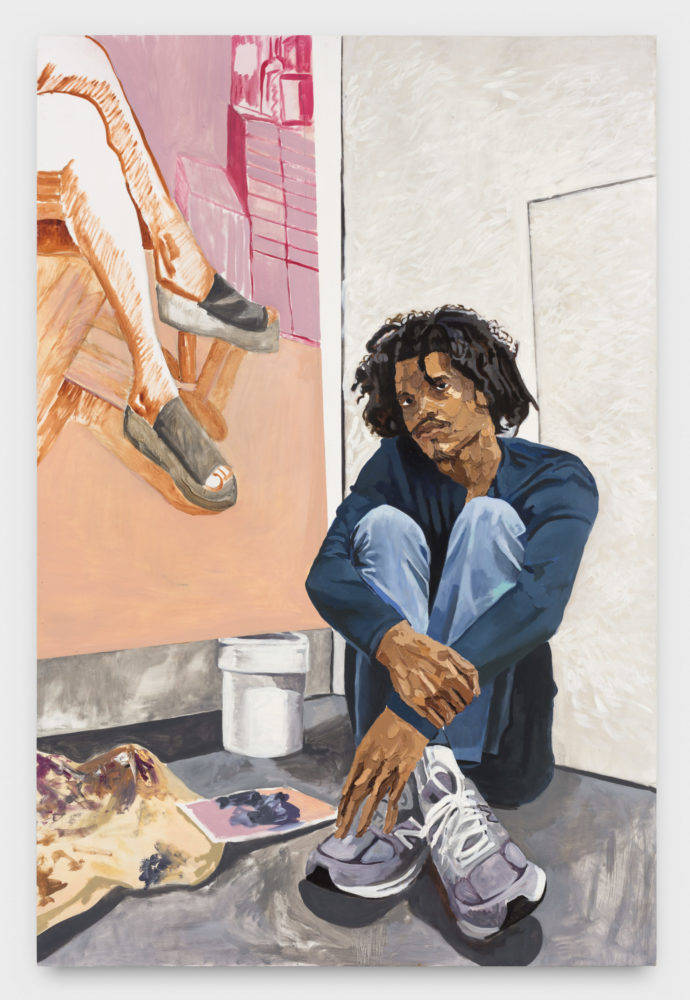
Gerald Lovell, “Self Portrait X,” 2020, oil on panel, 60 x 40 inches; courtesy of the artist and PPOW.
WHITEWALL: What was the starting point for “all that I have”?
GERALD LOVELL: Well, half the show was supposed to be for a smaller solo show that would have taken place last year in April and it ended up being cancelled. So, “all that I have” is half that show, and half works that were made after the pandemic started.
WW: Was it a natural segue to include both of those bodies of work? Once the two shows were merged, how did you come to the title?
GL: The work itself all aligns with both shows. After the show got cancelled, I didn’t paint anything for like four months because I couldn’t go anywhere; my anxiety was really high. I just was not in a good place to paint.
I tend to think really apocalyptic at times. Somewhere in there, to myself I was like, “Why do people need more paintings? Why would I go paint?” But then I realized that painting, what it’s always been for me, is a form of documentation of a specific time period. All of those works have been grand documents of my specific time here. So, in a way, I retreated back into thinking “What is the work going to do for people 20, 40, or 60 years from now?”
The title…it’s like a double thing. It’s all that I have as far as me and the connection I have to the work. But also, these moments in time that I spent with these people that I’m documenting— a lot of those pictures are of my close friends—in that specific point in time, all we had were these moments that we could share together, just be around each other, and kind of forget that the world was literally burning around us.
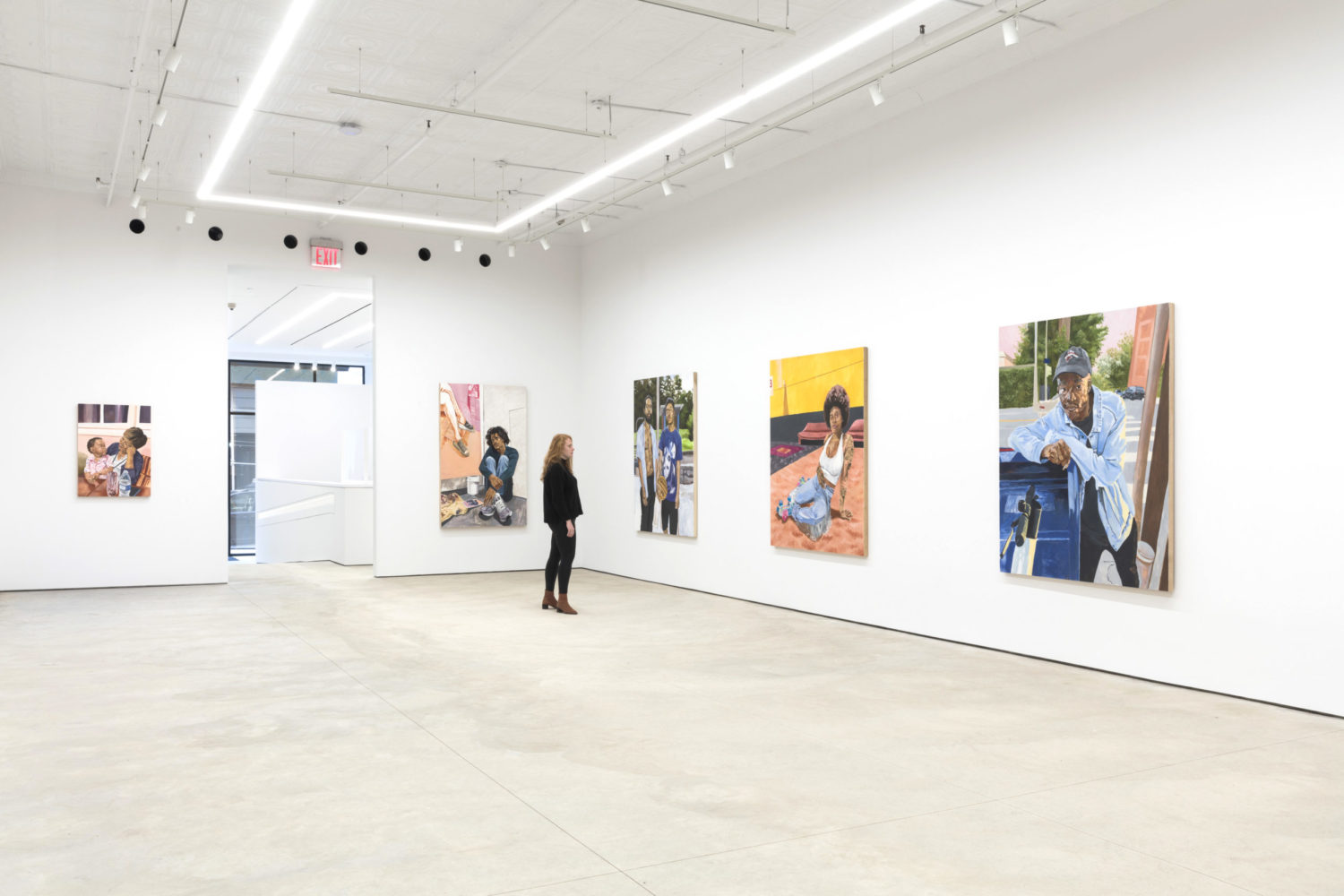
Gerald Lovell, installation view of “all that I have,” courtesy of the artist and PPOW.
WW: You learned to paint utilizing your photography background. What did this look like for you? Does photography continue to play a role in your painting practice?
GL: Yeah, that’s where the references come from; I take all of my own reference photos. When I initially started painting that was the beginning of Instagram and everyone became an instant photographer… but moving forward to now, instead of using an iPhone to capture these reference photos, I have several film cameras and I’ve started to take the photos on film, scanning them, and developing them at home.
WW: Your use of impasto on your subjects’ skin makes that a focal point of the artworks. Why do you choose to use this technique on the individuals and not their surroundings?
GL: When I first started painting in this style, the whole paintings were in this impasto technique. As I progressed and wanted to paint bigger, economically, I made the decision to choose what I was going to do the impasto technique on—because painting four-feet by three-feet paintings in that style, I would run out of all my material in one painting… and then I would just have one painting [laughs].
So, there was no real intention behind that, but it’s been really cool to see different peoples’ interpretations of what it means. And I like the way it looks.
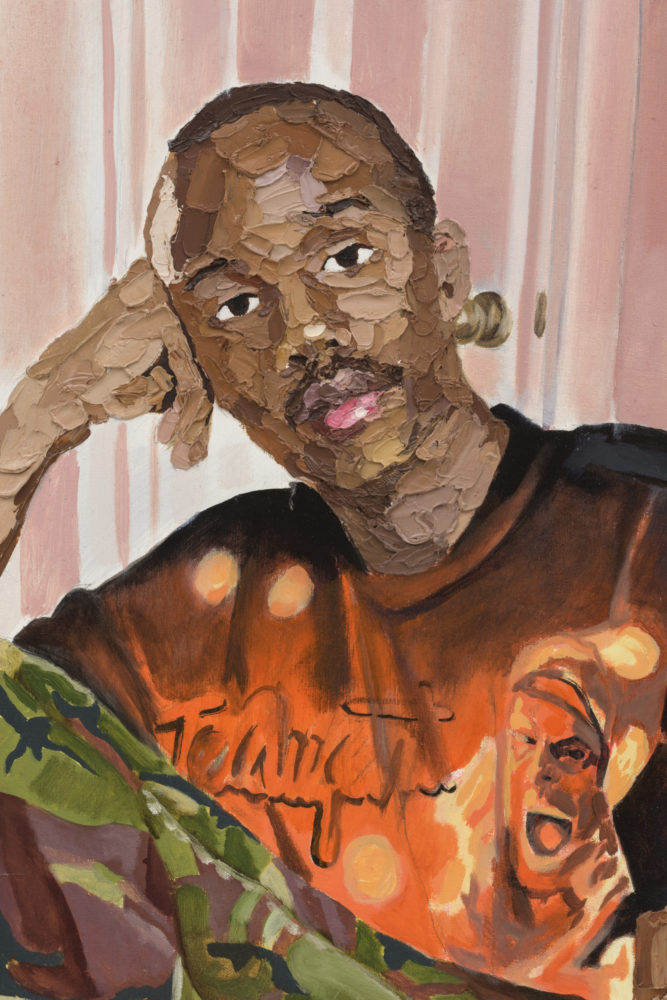
Gerald Lovell, “Quil” (detail), 2020, oil on panel, 48 x 36 inches; courtesy of the artist and PPOW.
WW: What is a common interpretation or assumption people make regarding the textured skin?
GL: Being that a lot of my subjects are African American, and because I’m African American, they often project ideas of wanting to emphasize that Black skin is beautiful. There have been a lot of different takes on the fact the amount of paint use is exaggerated and how that could mean all of these different things as far as highlighting Black lives.
WW: Were there any works in the show that were particularly challenging or brought you to something new?
GL: Painting in that size—like six feet tall, that’s taller than I am—physically, it was very laborious. I found myself tired a lot of the time. But other than that, I like making really big paintings. They have this really grand feel that makes the moments larger than life, which is cool to me.
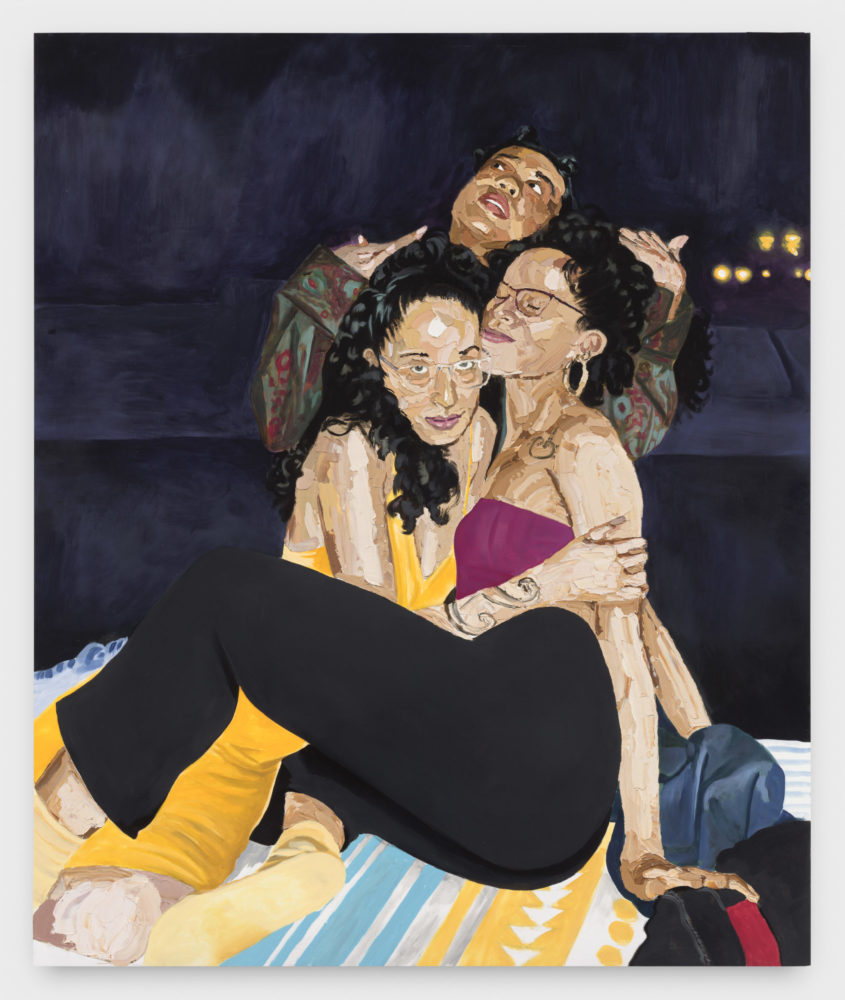
Gerald Lovell, “The Night on the Roof,” 2020, oil on panel, 72 x 60 inches; courtesy of the artist and PPOW.
WW: Tell us about your studio. What does a typical work day look like for you there?
GL: I used to have a studio across town but now I’ve rented out this house where there’s a room that I use for a studio in the back of the house.
[My] typical day depends—sometimes I’m a night worker. I could work all night. But also, I really like when I get into routines of getting up at 6 am, drinking tea, breakfast, and then light painting until the afternoon. Then maybe a couple of hours of really focused painting… and by 5 or 6 o’clock I’m playing video games for the rest of the day [laughs].
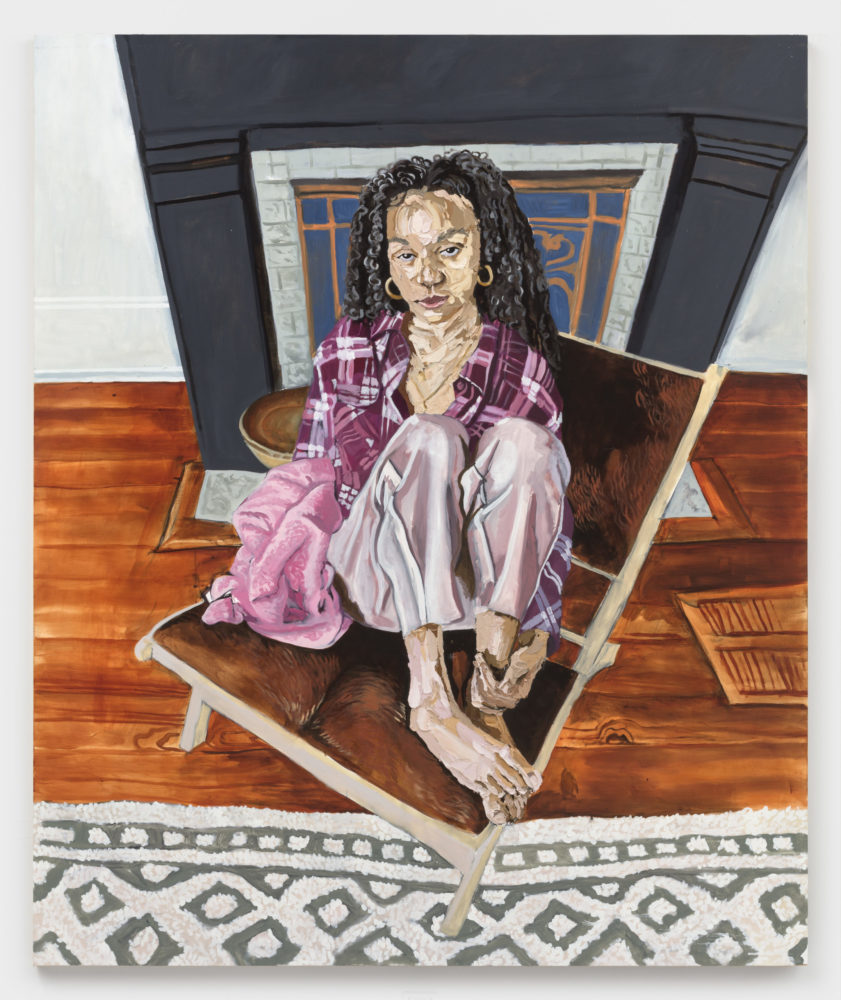
Gerald Lovell, “Searcy,” 2020, oil on panel, 72 x 60 inches; courtesy of the artist and PPOW.








